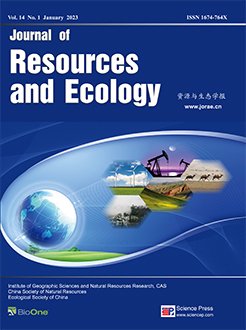Soil is the most important carbon pool of the mulberry plantation ecosystem, so understanding the characteristics of the soil carbon pool in mulberry plantations provides an important basis for the research of carbon sinks in economic forest ecosystems and farmland ecosystems. In order to explore the spatial differentiation pattern of the relationship between carbon and nitrogen in mulberry plantation soil, this study analyzed the organic carbon content and total nitrogen content of the surface soil layer (0–20 cm) and the subsurface soil layer (20–40 cm) of 475 mulberry plantations in five major regions of China, Southwest China (SWC), Central South China (CSC), East China (EC), North China (NC), and Northwest China (NWC). The research showed seven key aspects of this system. (1) The soil organic carbon of mulberry plantations was significantly different at the two soil depths. The average content of organic carbon in the surface layer of mulberry plantation soil was 10.71±7.01g kg–1, which was 37.13% higher than that of the subsurface layer. (2) The soil organic carbon of mulberry plantations had significant differences in spatial differentiation, which was manifested as SWC>CSC>EC>NC>NWC. (3) The total nitrogen content in mulberry plantation soil had significant responses to the region, the soil layer depth, and the interaction between the region and soil layer depth. Among the regions, NWC had no significant difference between the surface layer and subsurface layer of the soil. EC had the maximum difference in total nitrogen content, with the total nitrogen content in the surface soil layer being 56.68% higher than that of the subsurface soil layer. The total nitrogen contents of the surface soil layers in the SWC and NC were 34.27% and 20.79% higher than those of the respective subsurface soil layers. (4) The mulberry plantation soil C/N ratios had a significant response to regional differences, as NWC>SWC> EC>CSC>NC, but this ratio had no significant response to soil depth. (5) Soil pH had significant spatial differentiation in relation to soil organic carbon and total nitrogen content in mulberry plantations. NWC had no significant correlation between pH and organic carbon or total nitrogen content, while CSC had a significant positive correlation between pH and both soil organic carbon and total nitrogen content. Other regions showed significant negative correlations between pH and both organic carbon and total nitrogen content. (6) There was a significant negative correlation between the C/N ratio of the surface soil layer and pH in mulberry plantations, which was mainly contributed by SWC, while the other regions' surface soil layers had no significant correlations between C/N ratio and pH. (7) There was no significant correlation between the C/N ratio and pH in the subsurface soil layer in mulberry plantations. These results reveal that in either the research on mulberry plantation carbon pools or the innovation of green and low-carbon planting technology in mulberry plantations, the spatial differentiation characteristics of soil must be considered. Furthermore, the spatial differentiation of soil organic carbon can be used as the basic foundation for the planning and design of mulberry afforestation or ecological restoration projects.
How to translate text using browser tools
12 December 2022
Spatial Differentiation of the Coupling Characteristics of Soil Carbon and Nitrogen on Mulberry Plantations in China
Wang Xie,
Hu Yang,
Guo Haixia,
Zhang Jianhua,
Tang Tian,
Zeng Qiguo
ACCESS THE FULL ARTICLE
carbon neutrality
carbon pool
Climatic change
economic forest
nitrogen pool
woody plants






